The Designers Institute John Britten Black Pin is awarded to a designer for their leadership, vision and achievement both in New Zealand and internationally.
John Britten Black Pin Winner, 2019
Clive Fugill
Introduction
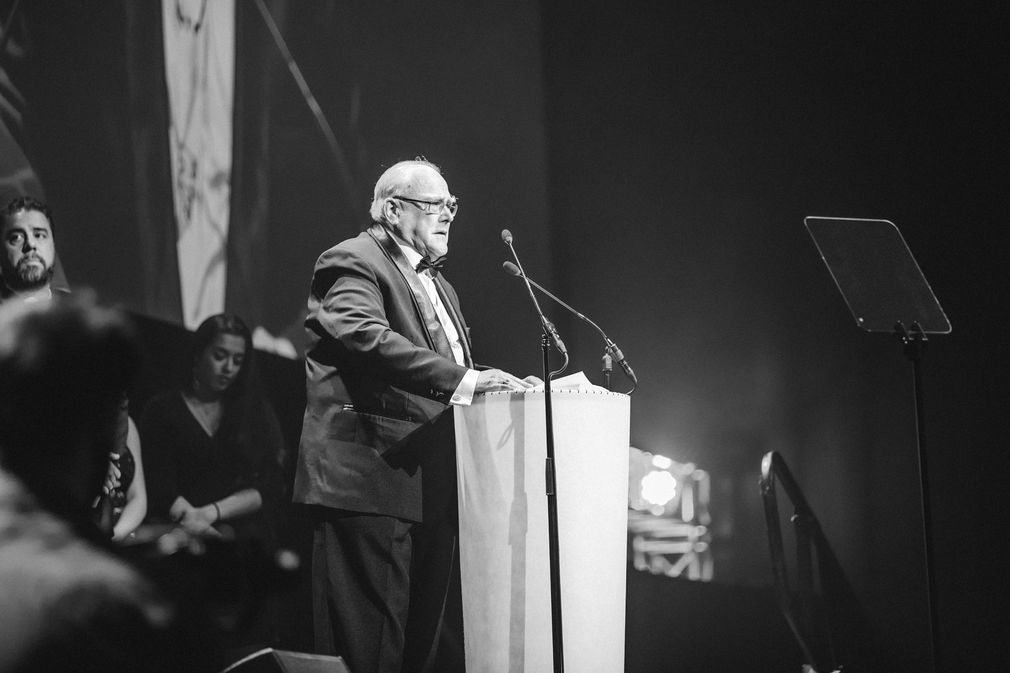
Q+A: Mike Barrett talks to Clive Fugill
Kia ora Clive, great to see you here at Te Puia. Shall we start at the beginning? What was your childhood like – any carvers in the family?
No. My family background were all bushmen. They worked in the forest. The whole family. They were contractors.
And was that here, in Rotorua?
Yes, around this area. They worked blocks of bush over the back road to Tauranga, through Mangorewa Gorge. Blocks of bush out the back of Ngongotahā. My father worked in the old National Timber Company workings back in the ’20s and ’30s. Mostly around this area, although later on they did pull bush out of Minginui and up through there. When I was very young, they’d bring firewood home and it was all native stuff, so I learnt native timber pretty quickly and what types of wood were what.
I guess times have changed, regarding what’s firewood these days.
Well, the company dissolved a bit because they didn’t want to go into pine. They were all about native timber. As soon as the pine came in, my father saw it. He tried to convince my grandfather to go into it, but nobody wanted to, so the company just folded. I learnt a lot from my father. Heck of a lot of stuff from him because he virtually lived in the bush. There’s nothing he didn’t know about it. He knew all the trees. He knew Māori rongoā, the medicines. I got a lot of his practical knowledge, but I spent time in the woodshed with a pocketknife. That’s how I learnt.
Really? Had you been exposed to any carving or seen something that got you going?
Sort of, yes. My first inklings of it were when I was at primary school; they used to bring exhibitions around from the museums. I’d see artefacts, patu and things like that. For some reason, I had a fascination with weaponry. Māori weaponry fascinated me. They had slideshows with all these weapons, and I started drawing them and trying to carve the shapes and forms with a pocketknife. I was very good at art at school, if there was an art prize around, I’d get it.
Other than that, what were you like academically?
I was dumb as a two-bob watch, but there was reason for that. When I was at intermediate school, I started getting these headaches. I’d go home from school and lie down and after a couple of hours it was gone. Father took me to the doctor, Dr More was his name, one of the old school doctors, and he checked me out. “What’s wrong with this boy? he said. “I wonder. Come here boy. Read that.” I couldn’t read any of it. He said, “There’s his problem. Get him glasses.” I’ll never forget the day I walked out that door with glasses on. I could see for miles. Then my schoolwork picked up.
So, your art was eventually applied to different materials, through carving?
I did a little bit of everything because when I was at primary school one of our teachers, Mrs Leach, she was a Māori teacher, too, had a kiln and did pottery. She said, I know where you’re coming from, but you have to know this other stuff. I know where your career’s going, you’ll be doing something in the art field.
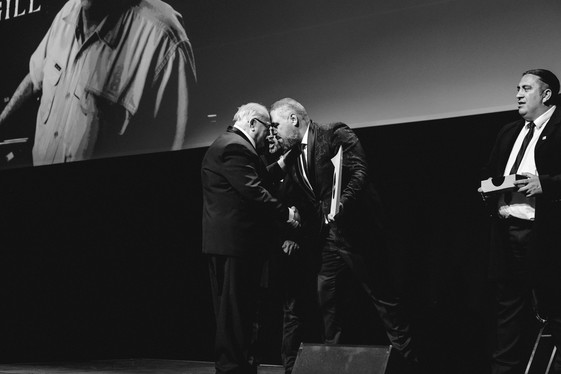
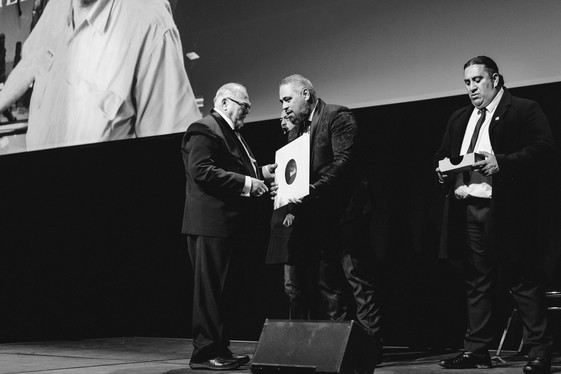
Hon. Minister Peeni Henare
When did you start to acquire carving knowledge?
When I was at intermediate school, about 1962. My parents got me some books on Māori carving and some carving tools. I read the books. One thing I did concentrate on when I was at school was reading, one of the teachers said if you can read the whole world will open up in front of you – now I do a lot of reading, heaps.
What do you read?
Anything and everything. I’ve got a huge collection of Māori books at home that I’ve collected over the years, and other material as well. I’m just sorting it all out because I’m trying to do an archive here at Te Puia. Anyway, I got onto carving and away I went. It was quite common to see me carrying a tōtara fence post up from the paddock over the back. I’d cut it up and make bits and pieces out of it.
What were your first carving tools?
The first set I got was a set of little tools. They were Miller Falls, America. A set of six. Then my mother gave me a set of flat chisels. I’ve still got those. Then I started getting pocket money because I used to do souvenir pieces for Paradise Valley’s souvenir shop. I’d make these things and they’d come around and buy them all. I had a healthy bank balance, mate. It was better than Dad’s.
It sounds like you were quite the young entrepreneur.
I wondered what I was going to school for. In about 1964 we shifted house and my neighbour, Dave Winterburn, who was from Ngāti Raukawa and carved down at the Buried Village, was talking to dad over the fence one day. He heard this tap, tap, bang, bang, bang going on in the shed and Dad says it’s the young fella doing some carving. “What sort of carving? Māori carving. This I’ve got to see.” He hopped over the fence and came and had a look. “It’s not bad. I think you want a bit of help mate,” he said. “Meet me down at my kitchen Saturday morning, seven o’clock and I’ll take you out to the Buried Village.”
That was your first supervised go at it?
Yeah, he used to take me out there. I learnt a lot about the business side of things. I started working there. Then at Rotorua Boys High School, which I went to, the stage was all carved and there was an early carving in the front entrance that went right back to the first carving school that was here in the 1930s. John Taiapa’s brother, Pine Taiapa went to that school, and they were reviving tribal styles of carving. John and his off-sider, Jim Ruru, carved the whole front of the stage. I used to sit in there and stare at that carving and I’d think, yeah boy, that’s what I want to do.
I’ve seen a photo of it – it’s an impressive piece.
Yes. There was another episode in my life, too. I was about nine and we were camping in Dargaville. It was raining cats and dogs. We put the tent up and it was quite miserable. Dad was reading the local rag and it had a story about a private museum. We got in the car and found the place. It was an old homestead this guy had. He’d kicked the two bedrooms out and made it into one room and that was his museum.
What was in it?
Well, you knew you were onto something because as soon as you pulled up there was a small waka on the front lawn and one of those waka kererū, pigeon troughs. So, in we go, and he had a mean collection, one of everything, all the different cloaks, adzes…a huge collection of kauri gum, Māori books. He came out and showed us all these things. He was in his 60s then, this old fella. There were two cabinets in the front of the room, one had tiki, the other had two greenstone mere and a stone patu. He pulled that out and let me have a look at it. I held it in my hand and just, whoa. It had a little chip out of the top of the blade but this thing was so perfect. It was almost jet black. It was unreal.
Dad said this young fella, he’s into carving and stuff, so the old fella took us out to his workshop. He did Māori carving and had these filing cabinets with the finest of English carving tools. He put a piece of wood in a vice, drew out all the patterns, carved them and named them. When he finished, he said, “Here, you can have that.” I’ve still got that.
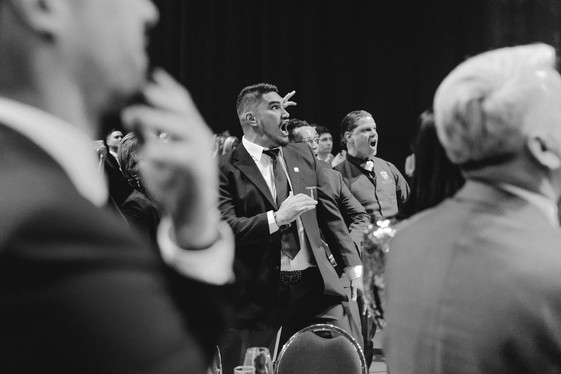
You mentioned John Taiapa before – a well-known carver – how did you meet him and what influence did he have on your career?
Well, going back to old Dave Winterburn. One day there were all these carved barge boards for a meeting house in Dave’s basement. John Taiapa and his offsider were working on them for the Hangarau meeting house over home, one of ours, in my tribal area. That’s when I first met John. I knew then I wanted to be under this guy. He was the gun.
And that was when you applied to the carving school at Whakarewarewa?
Yes, my first year was 1967. In ’65 it had started because of the New Zealand Māori Arts & Crafts Act 1963, which we sit under, they had to have somewhere to administrate it. The government said we’re not funding it; you can fund yourselves. And right up to today, we’ve done that through tourism. That’s what’s kept the project going all these years. When I came here in ’66 there was nothing but the old Ngongataha Post Office. That was the first admin building. By the end of ’66, they’d built the admin block and that was the first carving school.
What was it like turning up to school on the first day?
It was good. I was 17 when I came up here to get my application form for the school. Anyway, I applied, and they rejected it, saying you’re not Māori. Dad said, “Oh yeah, is that right? Here’s his iwi, here’s his hapū, here’s his all the rest of it.” They still didn’t believe it, So, they sent somebody from Māori Affairs around to interview me. I showed him all my drawings and carvings and things. I explained what they mean, and he said, “You know more about it than I do, boy.” Highly recommended. That went in, and they still bucked it. Dad knew some of the guys on the board too, so he went in and said, “Okay board, just look at this.”
This family photo?
Yes, he took that in, and he said, “Righto, you’re questioning my Māori background. Here’s the go. The little girl there, that’s my older sister. This is my mother, his grandmother. That’s his great grandmother, his great, great grandmother and that’s his great, great, great grandmother. That’s the oldest child in each generation spanning five generations. Now, having seen that, have you got one in your fella’s family to better it?” Well, of course the answer was no. I got an acceptance letter from the Institute on Christmas Eve 1966. So, I ended up here under John Taiapa and Tuti Tukaokao. He was 2IC and from my own iwi too, a distant relative.
How many students were there at that stage?
There were seven.
When you first started was everyone of comparable skill? Were you all starting from the same place?
I think everybody was sort of…I struggled a little bit because they half-pie picked on me at the time. Didn’t realise my tribe was Ngāti Ranginui. We know how to dig in. We taught them that. Taught the colonial troops that lesson at Gate Pā. Because all these guys were at a hostel, they were having a royal time. There was wine, women and song, and parties and everything. I stayed at home and did the study.
Was it all carving?
When you do a diploma, you do a whole lot of other things, including tukutuku work, kōwhaiwhai painting. We’d all gone through all of that. When we graduated in 1969, they announced a special award, an honours award for the top student. Anyway, I’m sitting there thinking well you’re not going to get that mate. Next minute they call my name out. It took me a while to digest. Then there was a bit of controversy, a lot of people questioned it. John said, “Hang on a minute. First and foremost, he’s not Pākehā. He’s Māori just like you. And, the other thing is the guy worked for it.
So, it sounds like discrimination was a recurring theme? You sound quite driven, through.
I was. It was what I wanted to do. I’d made my mind up, that was all. It was a passion. So, these young ones we’ve got now, I would say to them look for a passion. If you’ve got a passion in there, you’re going to go way ahead. We’ve got one boy in here now, he’s here every day on time, every time. You can set your clock on him. He’s just passionate about what he’s doing.
After you graduated, what did you do?
I stayed on because I had the opportunity to work under John. The first thing was long weapons. He says, “You haven’t made those. Go and cut all this timber out.” It’s the rātā. “Go bring it all up here.” Took all that up. He says, “And, you’re going to make a set too. I’ll show you how the old fella Iramea taught me.” I learnt a lot from him. I started to go in and pester him each day for information. Now those are the only records, my notebooks and other stuff there.
Did your notes inform the book you wrote, Te Toki me te Whao – The Story and Use of Māori Tools?
Yes. I always thought about writing books but because I wasn’t an academic success at school, I didn’t want the book to be an academic nightmare. I wanted something that everybody could use, from primary school to university, and be easily understood. Like my brother, he doesn’t know anything about this at all. He got the book, read it and said he understood every single thing. I’m on a second book now, on carving.
How’s that going?
It’s a bit more difficult. You’ve got to be careful not to regurgitate everything else that’s been done. There’s that much written on carving but the biggest problem is that the authors aren’t carvers, they’re academics. They’ve probably never picked up a chisel in their lives. I’m coming from the hands-on perspective of a carver – and ironing out a lot of the boo boos they’ve come up with that don’t make sense.
What sort of reference material do you have?
I’ve got a huge collection of books. I didn’t have to go anywhere. I just go up to the room, pull the books out I needed. I’ve got a huge collection of artefacts like adzes that I’ve collected over the years. If want anything get the thing, draw it all out.

Celebrating with Clive Fugill the NZ Māori Arts & Crafts Institute (NZMACI), Andrew Baker and Anzac Tasker.
Sounds like you might need to knock out a wall at home and create a little museum. So, what do you reckon, having seen people coming in and out of here; do you notice generational shifts or is it mostly a constant?
It was a little bit different in my time. The guys you’re getting in here now, a lot of them have been brought up with a Te Reo and tribal history background. Some of them are quite knowledgeable. Some have been carving before. Some have never carved, and you get to know them and get to know which areas to concentrate on. A good teacher, John told me that, is one that will identify the good carvers, the ones that are not so good, and the ones that are struggling. The good carvers that pick it up quite quickly – set them the work, let them go. The next group will also come up to that standard with a minimal amount of input. All your time will be spent at the lower end. Your job is to bring that group up so the whole cohort travels together. That’s why at the end just about everybody will be at the same level when they’re graduating.
John was a perfectionist in everything he did. He’s the only person who could build a tribal meeting house from the concrete foundations to the last stick of carving in it. He could do every single part of that house because he had his tickets in building. People would say he was as good at building as he was at carving. He was exceptional. His brother was the mouthpiece. He knew all the history. He was a great orator and a great carver. A very, very good carver. He must have worked on over 105 houses in his time.
Have you done many houses?
I’ve worked on well over a dozen, I suppose. Supervised about six in carving them.
What do you like to do the most? When you’re carving do you have a preference for a particular type of thing?
I used to love the big stuff but then your hands pack up. You have trouble in the wrists and stuff. That’s why I concentrate on the smaller work now. I do a lot of the finer stuff.
Do you think you’ve gotten better as a teacher, as time has gone on?
I’ve learnt a lot about teaching. You learn how to fix things. Guys come to you with a mistake and they don’t know how to fix it. They get upset. But you know, the guy that makes all the mistakes will learn everything. The guy that doesn’t make the mistake will learn nothing. I’ll just say, “You’re making mistakes, so you’ll learn. When your turn comes to teach, you’ll probably know six ways of getting out of the problem.” I have another bit of advice too. I remember the old fella saying this. “Do a good job it’s your meal ticket to the next one, and don’t forget that.” That applies to anything. Do a good job, do your best.
What do your graduates do, when they graduate?
We keep some on site but normally they all go back to their own areas. They may do other jobs. They might do related work. A lot of our guys have gone tattooing. We’ve got four schools on site here. One is up north, it’s a waka school. We’ve got the weaving. We’ve got Te Takapū, which does greenstone, under Stacy Gordine. We’ve got the carving school, and we’ve also got a bronze foundry here. A lot of these young fellas in here, some of them are just like sponges.
Just out of interest, when did you learn Te Reo Māori, Clive?
When I was in high school. They all thought I was mad. Even the old headmaster. “Te Reo Māori.” He said, “Why do you want to take that?” Dad was like, “He wants to take that language for a reason. He’s interested in Māori wood carving and he’s interested in all things Māori.”
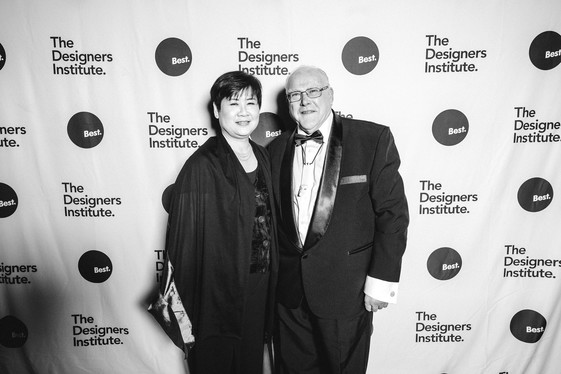
Mr & Mrs Fugill